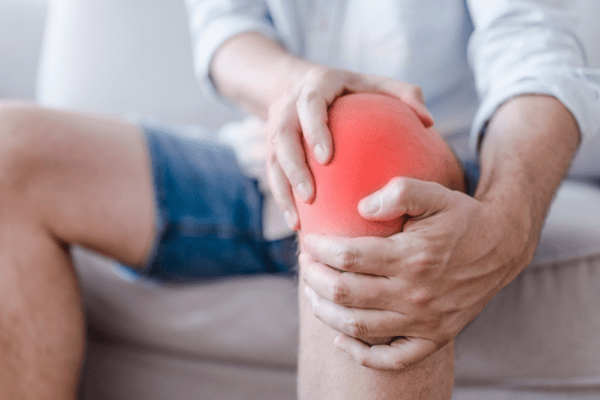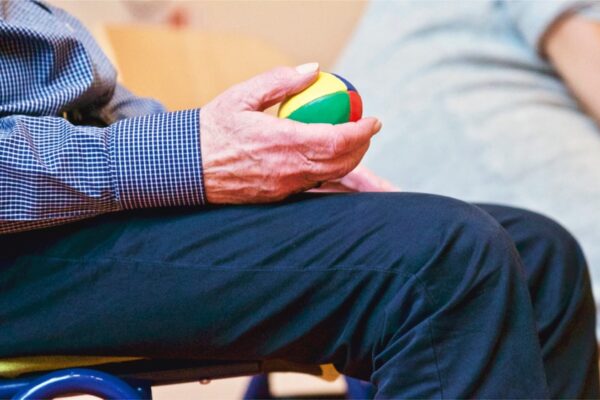Ankylosing spondylitis (AS) is a form of arthritis that primarily affects the spine. AS is a chronic inflammatory condition, affecting the joints, ligaments, and tendons of the spine. Ankylosing spondylitis involve chronic inflammation of the spinal joints (vertebrae), which can lead to severe pain and disability.
Ankylosing spondylitis, specifically, causes enthesitis- inflammation where the ligament and tendons attach to the bones of the spine and to bones of the peripheral joints.
In response to the inflammation, the body produces extra calcium around the bones of the spine. In advance cases, this can lead to bone fusion- sections of the spine fused in a fixed, immobile position. AS can also affect other parts of your body such as the shoulders, hips, knees, heels, and small joints of the hands and feet.
Symptoms of Ankylosing Spondylitis
Ankylosing spondylitis often develops in people who are in their late teens or 20s. It is observed that males are more likely to develop AS than females. The condition tends to be milder when it does occur in females, which also makes it harder to diagnose. According to the Spondylitis Association of America, symptoms usually begin between the ages of 17 and 45 years.
Symptoms for ankylosing spondylitis can vary and often are characterized by mild to moderate flare-ups of inflammation. The most common symptom of AS is lower back pain and stiffness in the area. Other signs and symptoms of ankylosing spondylitis include:
- Early morning stiffness
- Fatigue
- Poor posture or stooped shoulders
- Weight loss
- Low appetite
For some people, ankylosing spondylitis pain gets worse during the night, with improvement upon arising. For others, they experience worsening of back pain and awakening during the second half of the night in particular.
Other possible symptoms of recognizing ankylosing spondylitis include buttock pain, which is indicative of inflammation of the sacroiliac (SI) joints, neck pain, eyes problems and neurological symptoms.
Because AS involved inflammation, other parts of the body can be affected as well. Signs for these include:
- Inflammation of the bowels
- Mild eye inflammation
- Achilles tendonitis
- Heart valve inflammation
What Causes Ankylosis Spondylitis?
The underlying cause of ankylosing spondylitis is unknown. It is, however, believed to have a strong genetic component, and possibly an environmental one.
Research estimates that you’re 10 to 20 times more likely to develop a case of ankylosing spondylitis if the condition runs in the family. Individuals with ankylosing spondylitis have a gene variation, a protein called HLA-B27. According to a 2002 study, more than 90 per cent of people with ankylosing spondylitis have the HLA-B27 gene variation.
Individuals with a low frequency of the HLA-B27 gene variant have a correspondingly low occurrence of ankylosing spondylitis.
When it comes to environmental factors, more research is still needed to understand the factors that trigger ankylosing spondylitis. Some researchers believe that bacterial infections may be a factor. One hypothesis has been that AS may start when the defenses of the intestines break down and certain bacteria pass into the bloodstream, triggering changes in the immune response.
Is Ankylosing Spondylitis an Autoimmune Disease?
Along with being a chronic inflammatory disease, ankylosing spondylitis also constitutes an “immune-mediated” disease. However, there are some disagreements by immunologists about whether to consider AS an autoimmune disease.
Autoimmune diseases develop when your body attacks its own healthy tissues. The blood protein that attacks the tissues are called autoantibodies, and they are detectable in a blood sample. In the case of ankylosing spondylitis, autoantibodies are seldom found. To have some form of arrangement, scientists now use the term “auto-inflammatory” to refer to inherited diseases that cause repeated episodes of inflammation in the absence of autoantibodies.
Therefore, since ankylosing spondylitis has both autoimmune and auto-inflammatory characteristics, it falls into both of the categories simultaneously.
Who’s at Risk of Ankylosing Spondylitis?
Apart from family history, following characteristics can tell if you are at a higher risk for developing ankylosing spondylitis:
Age. Initial symptoms of ankylosing spondylitis often appear in younger adults. Others experience their first symptoms between the ages of 20 and 40.
Gender. Ankylosing spondylitis is more common in men than in women. It is estimated that AS is three times more common in males than women.
Ethnicity. Ankylosing spondylitis is also influenced by your race. AS is seen to occur more frequently in Caucasians, than those of African descent or other ethnicities.
What is the Duration of Ankylosing Spondylitis?
Ankylosing spondylitis is a condition that lasts a lifetime once diagnosed. But the effects of the disease and severity of symptoms vary from person to person. People with ankylosing spondylitis typically experience one to five flares in a year. Flare-ups may last from a few days to three months or even longer in more serious cases.
Effective treatment can help ease the condition, preserve physical functioning, and maximize the quality of life. In some cases, treatment can also result in disease remission. Your symptoms could subside for periods of time. You may experience a low level of disease activity, with little inflammation or physical limitation caused by joint pain and stiffness.
Treatment Options for Ankylosing Spondylitis
There is currently no cure for ankylosing spondylitis, but treatment options available can help manage pain and reduce symptoms. Treatment options available include:
- Physical therapies and exercises
- Certain drugs and medication
- Surgery, in rare cases
Nonsteroidal anti-inflammatory drugs (NSAIDs), such as ibuprofen and naproxen, are usually prescribed to treat pain and inflammation caused by ankylosing spondylitis. Medication is the first choice of treatment for ankylosing spondylitis.
If an NSAID doesn’t provide enough relief, you can also be prescribed tumor necrosis factor (TNF) drugs that can block inflammation triggers in your body. These drugs act to prevent inflammation, and they may ease joint pain and stiffness.
Exercise and physical activity are another to manage your ankylosing spondylitis symptoms and encourage flexibility and strengthen your core. Range-of-motion exercises, as well as strength training exercises, are a good point to start. Your doctor will only recommend a joint replacement surgery if you have severe damage or deformity to your knee or hip joints.




